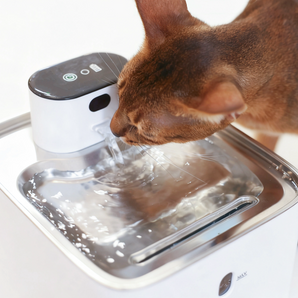
Ever caught your cat staring at you and wondered, “Do they know what I’m thinking?” You're definitely not alone. Cats may be quiet creatures, but they’re far from indifferent — they have their own subtle (yet surprisingly sharp) ways of understanding us. Let’s unpack what’s going on behind those mysterious eyes, and how much your cat actually understands when you talk, move, or even just walk into the room.
Do Cats Understand Human Language?
Not exactly in the way we do — but they get the vibe. Cats aren’t going to break down grammar rules or understand full sentences, but they’re tuned in to our tone and rhythm. A warm, cheerful voice? They’ll likely stay close. Sharp or loud tones? That’s usually their cue to walk away — maybe with a tail flick just for emphasis.
Can Cats Recognize Your Voice?
Absolutely. Studies (and cat owners) agree — cats are good at telling their favorite human apart from a stranger. Even if they’re pretending to ignore you (classic), their ears might twitch or they’ll turn their head slightly. Some will meow back. Most respond best to calm or upbeat tones, which they link with good things like food, play, or affection.
Do They Know Certain Words?
Yes — especially if it benefits them. Words like “treat,” “dinner,” “toy,” or even their own name tend to get their attention fast. That’s because cats are great at connecting sounds to outcomes. Say “treat” right before offering one enough times, and they’ll start associating the word with yumminess.
And no, they don’t need to understand what a “treat” is — they just need to know what happens after you say it. Pretty clever.
Reading Between the Lines — Cats and Body Language
Cats are expert observers. They pick up on so much more than just what we say — how we move, where we look, how we approach them. If you’re calm, they’re more likely to stay close. If you rush toward them suddenly, they may choose distance.
The way you speak and move around your cat sends constant messages. A consistent tone and gentle gestures over time help your cat feel safe — and feeling safe is everything to a cat.
Communication Tips for Cat Parents
Want to build a stronger connection? Here are a few small things that make a big difference:
-
Stick to simple, repeatable words. Use the same phrase for the same thing — “dinner time,” “let’s play,” “come here.”
-
Reward the behavior you want. A treat, a scratch behind the ear, or even a soft “good job” reinforces that they’re doing something right.
-
Don’t rush the process. Every cat learns at their own pace. Some catch on quickly, others need more time — and that’s okay.
-
Talk to them anyway. They may not respond every time, but they’re listening. And over time, you’ll notice small shifts in how they engage with you.
That Special Human-Cat Connection
It’s not just in your head — cats do form close emotional bonds with people. In fact, science has shown they react more strongly to their owner’s voice than to anyone else’s. When you call them and they twitch their ears or tilt their head, it’s a quiet way of saying, “Yes, I know it’s you.”
Trust builds slowly, often through daily routines — feeding, playing, gentle petting. These consistent experiences create a relationship based on comfort and familiarity, which matters a lot in a cat’s world.
Final Thoughts
Cats may not speak our language, but they hear us — really hear us. Through tone, routine, body language, and consistent words, you’re sending messages every day. With time and patience, your cat will come to understand not just what you say, but what you mean.
And honestly, there’s something kind of magical about that.











